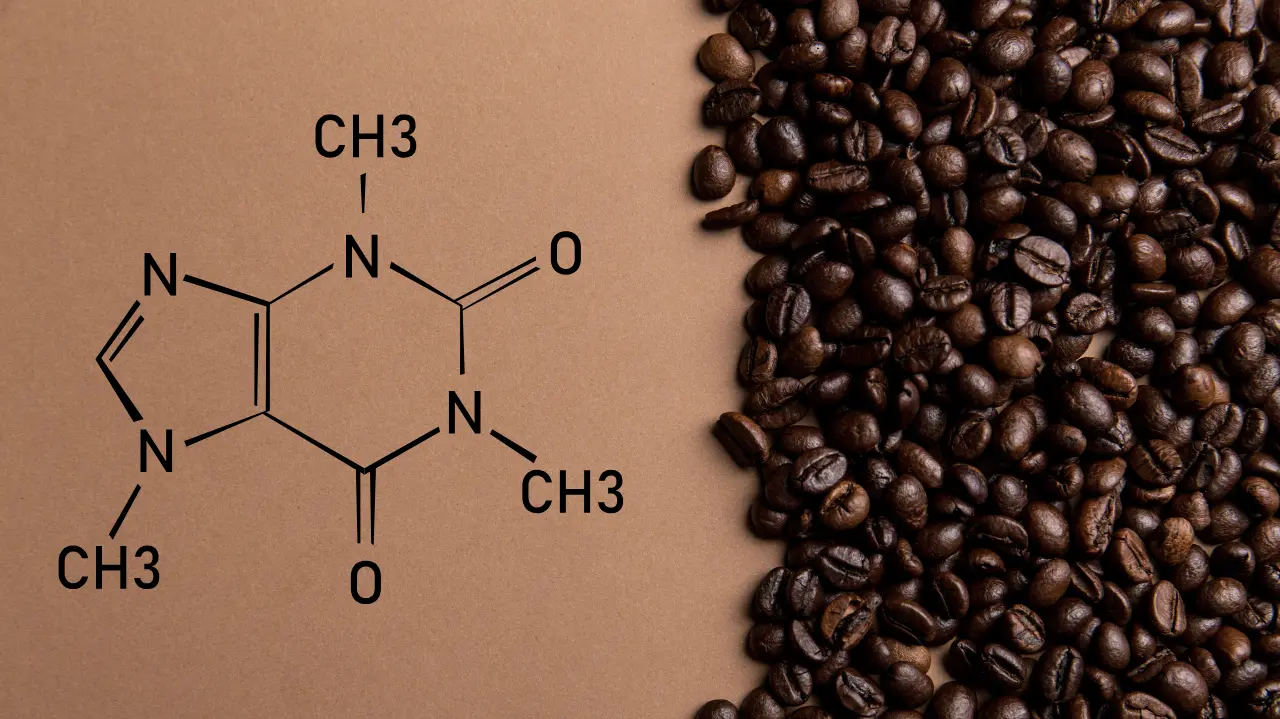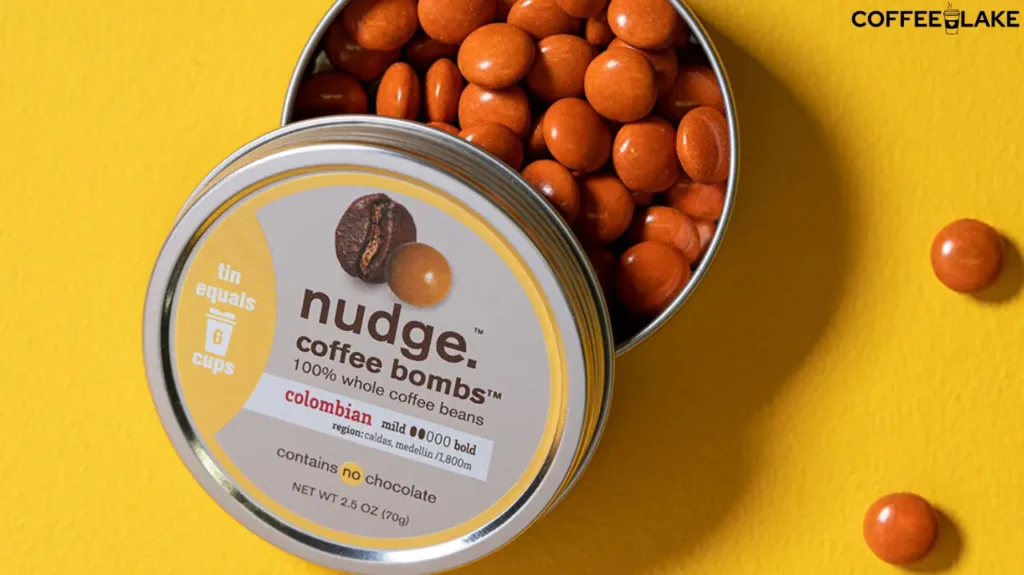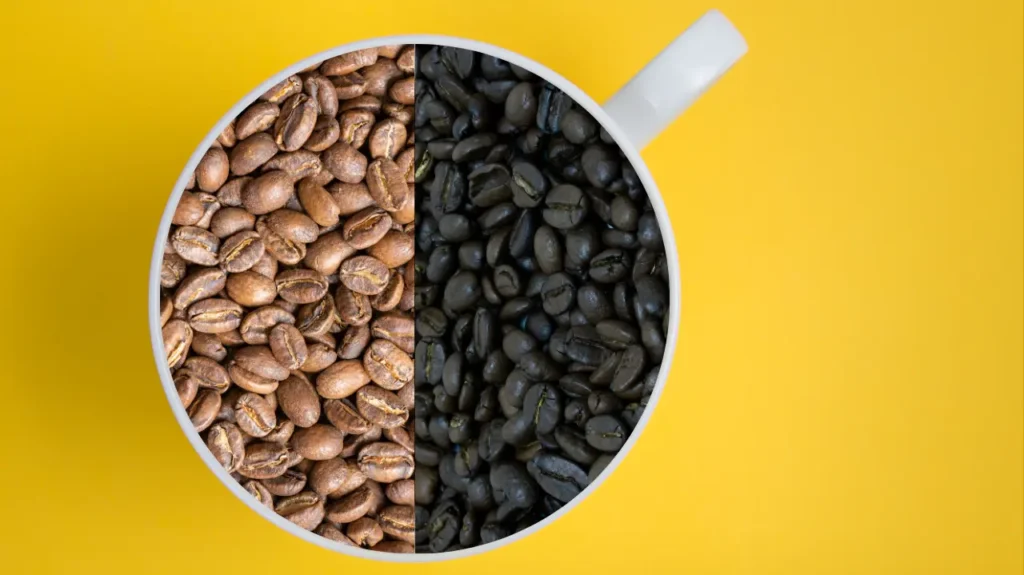You’re stirring coffee extract into brownie batter, savoring the rich aroma, when suddenly, does coffee extract have caffeine? The answer isn’t just a yes or no. Coffee extract, that tiny bottle of liquid magic, packs the essence of coffee beans, caffeine included.
But here’s the twist: how much caffeine it delivers depends on the beans, the brewing science, and even the brand you pick.
Coffee extract is a kitchen and beauty staple used in everything from fluffy cakes to fancy face scrubs. Yet its caffeine content remains a mystery to many. Some assume it’s as strong as espresso; others think it’s caffeine-free. Spoiler: It’s neither.
Through lab studies, chef secrets, and real talk from Reddit threads, this guide cracks the code.
Why does it matter? Imagine serving tiramisu to a caffeine-sensitive friend, only to learn your dessert secretly rivals their morning latte. Or wasting money on decaf extract that’s not truly decaf.
This isn’t just about flavor; it’s about health, ethics, and nailing your recipes.
We’ve mined insights from coffee chemists, pastry pros, and home bakers who’ve faced caffeine surprises (hello, hyper toddlers at midnight). Whether you’re a wellness warrior, a dessert addict, or just curious, consider this your roadmap.
Understanding Coffee Extract
Coffee extract is like Coffee’s secret weapon, a super-concentrated liquid that packs Coffee’s bold, deep flavors into just a few drops. Think of it as vanilla extract’s bolder cousin. Made by soaking coffee beans in water, alcohol, or other solvents, it pulls out flavor, natural oils, and caffeine.
This makes it perfect for recipes where you want Coffee’s punch without watering things down, like tiramisu, chocolate cakes, or even a creamy mocha frosting.
Commercial producers often use high-pressure machines or solvents like ethanol to extract every bit of flavor and caffeine quickly. But at home? It’s simpler. Grab a jar, toss in coarsely ground beans and vodka, let it sit for weeks, and voilà, you’ve got homemade extract.
Alcohol is a preservative here, giving your extract a longer shelf life. Pro tip: Dark roast beans provide a richer flavor, while lighter roasts keep things bright and fruity.
Not all extracts are the same, though. Pure coffee extract is just beans and solvent, no extras. Flavored versions might mix in vanilla or cinnamon, but these don’t hide the caffeine.
Watch out for labels: Some “coffee extracts” are concentrates, such as brewed Coffee boiled down to a syrup. True extract is thicker, more potent, and used sparingly.
A barista friend told me, “A little goes a long way with extract. It’s like espresso powder’s liquid twin.”
Why use it instead of brewed Coffee? Imagine baking cookies; adding liquid Coffee would mess with the dough. Extract delivers pure flavor without moisture.
Plus, it’s shelf-stable. No brewing is needed. Whether you are a home baker or a pro, coffee extract is your shortcut to depth and complexity; remember: The beans you choose and how long you steep them shape the final product.
Experiment, taste, and adjust; working with extracts is the joy.
Does Coffee Extract Have Caffeine?
You’re eyeing that bottle of coffee extract and wondering, does this stuff have caffeine? Short answer: Yes. But let’s unpack why.
Coffee beans naturally contain caffeine; it’s part of their DNA. Arabica beans (the fancy, smooth ones) have around 1-2% caffeine, while Robusta (the bold, earthy type) packs up to 4%.
When you make extract, caffeine tags along with flavor compounds; think of it as squeezing juice from an orange; you get sweetness and pulp.
The extraction method matters. Heat and pressure, used in commercial setups, act like caffeine magnets. Hot water opens Coffee’s pores, letting caffeine flow out freely.
Cold methods? They’re slower. Steeping grounds in vodka for weeks still pulls caffeine out at a relaxed pace.
One Reddit user joked, “My homemade extract could wake up a sloth, Robusta beans and patience!”
Concentration plays a role, too. Commercial extracts reduce the liquid, cramming more caffeine into each drop. A teaspoon might hold 10-30 mg, like a tiny sip of espresso.
Compare that to brewed Coffee’s 80-100 mg per cup. But here’s the kicker: how much you use matters. A dash in frosting? Barely a buzz. Does chugging extract straight? Not recommended.
Decaf options exist, but they’re not 100% caffeine-free. Beans are pre-treated (like the Swiss Water Process) to strip 99% of caffeine. The extract ends with <2 mg per teaspoon, safer for night owls or caffeine-sensitive folks.
A Quora user shared, “I use decaf extract in my bedtime cookies. Zero jitters, all flavor.”
So yes, the coffee extract has caffeine. How much? It mixes bean type, method, and how much you pour.
Caffeine Content in Different Coffee Extracts
Coffee extract’s caffeine levels depend on how it’s made, the beans used, and who’s making it. Let’s simplify this with a table and plain-talk explanations so you can see the differences at a glance.
Caffeine Comparison Table
| Product | Serving Size | Caffeine Content | Key Influencing Factors |
| Brewed Coffee | 8 oz cup | 80–100 mg | Bean type (Arabica/Robusta), brew time |
| Espresso | 1 oz shot | 60–80 mg | Pressure, roast level |
| Instant Coffee | 1 tsp | 20–40 mg | Processing method |
| Commercial Coffee Extract | 1 tsp | 10–30 mg | Robusta (high caffeine) vs. Arabica |
| Homemade Coffee Extract | 1 tsp | 5–25 mg | Grind size, steeping time, bean type |
| Decaf Coffee Extract | 1 tsp | 1–2 mg | Decaffeination process (e.g., Swiss Water) |
Commercial Extracts: Predictable but Potent
Big brands often use Robusta beans, known for their higher caffeine content, to create extracts of up to 30 mg per teaspoon. Smaller brands using Arabica beans might halve that number.
For context, the FDA recommends up to 400 mg of caffeine daily for most adults—far more than extract typically provides.
A baker on Reddit once shared, “I switched from an Arabica to a Robusta extract for my cookies, and suddenly my coworkers joked about needing decaf versions!”
Consistency here is key, as commercial methods tightly control caffeine levels.
Homemade Extracts: The Wild Card
DIY versions are a caffeine roulette. Steep coarsely ground light-roast beans in vodka for a week, and you might get 5 mg per teaspoon. But use finely ground dark roast, soak it for a month, and you’re looking at 25 mg.
One user admitted, “My first homemade batch had so much caffeine, my ‘relaxing’ chamomile tea turned into a late-night energy drink.” Variables like grind size, bean type, and patience level make homemade extracts unpredictable.
How It Stacks Against Other Coffee Products
A teaspoon of commercial extract (10–30 mg) sits between instant coffee (20–40 mg) and decaf brewed coffee (2–5 mg). But here’s the kicker: recipes rarely use more than a few teaspoons.
For example, two teaspoons of extract in a 12-slice cake means each slice has less caffeine than a chocolate chip. One Quora user noted, “Unless you’re chugging the extract bottle, the caffeine is just a background actor in your dessert.”
Decaf Extract: Not Zero, But Close
Decaf extracts use beans stripped of 99% caffeine, leaving just 1–2 mg per teaspoon. To put that in perspective, a teaspoon of decaf extract has less caffeine than a bite of dark chocolate.
Perfect for late-night baking or caffeine-sensitive folks.
A parent on Reddit shared, “I use decaf extract in my kids’ birthday cakes, no sugar highs, no caffeine crashes, just happy toddlers.”
Practical Tips for Coffee Extract Users
If caffeine matters to you, check labels for terms like “Robusta” or “concentrated,” which signal higher levels. For homemade, experiment with half-decaf beans or shorter steeping times.
A pro tip from a coffee roaster: “Steep your beans in vodka for two weeks instead of four; you’ll get flavor without over-extracting caffeine.”
Uses of Coffee Extract
Coffee extract is a kitchen magician; it adds rich, roasted depth to dishes without watering them down. But balancing its caffeine content with flavor requires a chef’s intuition. Let’s explore how to wield this potent ingredient like a pro.
In baking, a teaspoon of coffee extract can transform chocolate cakes, brownies, or frosting into something extraordinary. Unlike brewed Coffee, which adds moisture, extract delivers pure flavor.
A Reddit user raved, “My chocolate cupcakes went from ‘meh’ to ‘wow’ with half a teaspoon of extract, no one guessed the secret!”
For caffeine-sensitive guests, swap in decaf extract. The flavor stays, and the buzz fades.
Beverages also benefit. A few drops in a morning smoothie or evening cocktail (think espresso martinis) give a coffee kick without the bitterness.
One bartender shared, “I use extract instead of cold brew in cocktails; it’s smoother and doesn’t dilute the drink.” Want a caffeine-free nightcap?
Decaf extract works wonders in chai lattes or hot chocolate.
Savory dishes? Yes. Coffee extract’s earthy notes elevate barbecue sauces, steak rubs, or chili.
A chef on Quora explained, “A dash of extract in my bourbon BBQ sauce adds smokiness; guests ask for the recipe every time.” Since most recipes use minimal amounts, caffeine per serving stays low.
Even skincare gets a caffeine boost. Homemade face scrubs or creams with coffee extract can temporarily tighten skin, thanks to caffeine’s topical perks.
A beauty blogger noted, “I mix the extract with sugar for a morning scrub. It wakes up my skin better than cold water!” Here, caffeine’s absorbed minimally, so jitters aren’t a concern.
Real-World Insights
Coffee extract’s caffeine content sparks lively debates in kitchens and online forums. Here’s what real users swear by and warn against when using it:
A home baker on Reddit shared, “I added a teaspoon of coffee extract to my brownie batter, and my friend, who avoids caffeine, asked if I’d slipped her an espresso shot. Turns out she’s hyper-sensitive! Now I keep decaf extract on hand for her.” This highlights how even small amounts can affect some people unexpectedly.
Over on Quora, a cocktail enthusiast raved about versatility: “I ditched espresso shots in my cocktails. The coffee extract gives the same depth without grit. Plus, I can control the buzz, two drops for flavor, five for a kick.” His tip? Pair it with bourbon or chocolate liqueur for a layered drink.
But not all experiments go smoothly. One user admitted, “I used homemade coffee extract in my oatmeal cookies, not realizing how strong it was. My kids bounced off the walls all night. Lesson learned: test your extract’s strength first!” Others echoed this, urging beginners to start with half the recommended amount.
Decaf extract fans chimed in, too. A mom on a parenting forum wrote, “My toddler loves ‘coffee-flavored’ muffins. Decaf extract lets me mock the Starbucks vibe without turning her into a tiny insomniac.” Another user added, “I use decaf in my bedtime protein shakes; it feels indulgent without the 2 a.m. stare-at-the-ceiling effect.”
Savvy chefs also get creative. A BBQ guru on Reddit revealed, “Coffee extract in dry rubs? Game-changer. It adds a smoky undertone to ribs without a caffeine punch. Guests think I’ve been smoking meat for days.” Meanwhile, a skincare DIYer quipped, “My coffee-sugar scrub uses decaf extract. My skin’s glowing, and I’m not jittery while exfoliating. Win-win.”
Choosing the Right Coffee Extract
Picking the perfect coffee extract isn’t just about caffeine; it’s about matching the bottle to your lifestyle. Let’s cut through the noise with practical advice from coffee pros and everyday users.
For Flavor Purists: Seek out single-origin extracts. Colombian beans bring bright, fruity notes, while Sumatra offers earthy depth. A coffee roaster on Reddit advised, “Read the label like a wine bottle, origin tells the story.” Avoid “natural flavors” or additives; pure extract should list only Coffee and solvents (like alcohol or glycerin).
Caffeine-Conscious Shoppers: Beyond “decaf,” look for specifics. Extracts labeled “Swiss Water Process” guarantee 99% caffeine-free. One user shared, “I email brands to ask for lab reports; no shame in wanting exact numbers.” For a mild buzz, hybrid options exist: half-caf blends mix regular and decaf beans, balancing flavor with reduced caffeine.
Dietary Needs Matter: Vegan? Skip extracts with glycerin from animal sources (rare, but check). Sugar-free? Avoid “coffee flavor syrups” masquerading as extracts; they often add sweeteners. A keto baker noted, “I found an alcohol-free, unsweetened extract that fits my macros. Life-changer for post-filling cravings.”
Chef vs. Home Cook: Professionals often prefer concentrated extracts (like 4:1 ratios) for intense flavor without watering down batters. Home bakers might lean toward ready-to-use liquids. A pastry chef on Quora quipped, “My kitchen uses industrial-strength extract; a drop does the work of a shot of espresso.”
Shelf Life Savvy: Alcohol-based extracts have been available for years, while glycerin or oil-based ones can turn rancid faster. Store all in cool, dark places. A frugal Reddit user advised, “Buy small bottles if you rarely bake. That $20 artisanal extract isn’t a deal if it’s stale by next Christmas.”
Ethical & Eco Choices: Brands promoting fair trade or organic certifications appeal to conscious buyers. Explore ethical coffee sourcing at Fair Trade Certified.
One user wrote, “I pay extra for extract in glass bottles, plastic leaches flavors, and Mother Earth approves.” Others prioritize carbon-neutral shipping or recyclable packaging.
Budget Hacks: Love fancy extracts but hate the price? One user swears by diluting premium extracts with vanilla to stretch them. “Half coffee extract, half vanilla, the flavor still pops, and my wallet stays happy.”
Final Pro Tip: Taste before you commit. Many specialty shops offer sample sizes. As a barista said, “Your extract should smell like your favorite coffee shop, inviting, not artificial. If it doesn’t spark joy, keep hunting.” Whether fueling all-nighters or crafting kid-friendly treats, the right extract waits; no compromise is needed.
Making Your Coffee Extract
Crafting coffee extract at home is like becoming a flavor scientist; you control the beans, the buzz, and the boldness. Here’s how to brew liquid gold, with tips from kitchen rebels and caffeine enthusiasts.
Start with quality beans. Light roasts shine in extracts for floral, citrusy notes, while dark roasts deliver smoky depth.
A coffee geek on Reddit swore, “I use stale beans past their brewing prime; they still pack flavor for extracts, zero waste!” Grind them coarse, like sea salt, to avoid over-extracting bitterness.
Next, choose your solvent. Vodka is the go-to; it’s neutral and shelf-stable. But rum or bourbon?
They add caramel or vanilla undertones. One DIYer shared, “I steeped beans in spiced rum for a holiday extract; my eggnog has never been the same.”
Use food-grade vegetable glycerin for alcohol-free versions, though it’ll taste sweeter and need twice the steeping time.
The waiting game: Dump beans and solvent into a jar (1:1 ratio), seal it tight, and stash it in a dark cupboard. Shake daily for the first week, then weekly. Taste at 3 weeks; if it’s weak, let it ride.
A Quora user warned, “Patience isn’t optional. My first batch tasted like bean water because I rushed it.”
Straining secrets: Cheesecloth works, but a coffee filter catches fine grit. Squeeze every drop; those last bits are the most concentrated.
One frugal baker laughed, “I repurpose the soaked beans in brownie batter. Zero waste, double coffee punch!”
Customize your caffeine: Mix decaf and regular beans for a “half-caf” extract. Would you prefer zero buzz? Use Swiss Water decaf beans.
A mom in a parenting forum shared, “My ‘mommy’s nightcap’ extract is decaf; I get the ritual without the 3 a.m. regrets.”
Storage hacks: Alcohol-based extracts last years in a cool pantry. Glycerin versions? Refrigerate and use within 6 months.
Label with the brew date; homemade doesn’t come with a best-by sticker.
Pro tip: Test strength before using. Dip a spoon in extract, mix with hot water, and taste. Too weak?
Reduce it on the stove (low heat!) to thicken. A barista friend advised, “Treat it like a reduction sauce; gentle heat preserves the flavor.”
Why bother? Cost and creativity. Homemade costs pennies per teaspoon compared to store-bought.
Plus, you’re the boss; add vanilla pods, cinnamon sticks, or cocoa nibs during steeping. One Reddit user boasted, “My chili-infused coffee extract is the secret in my mole sauce. Fight me.”
In the end, DIY coffee extract isn’t just about caffeine; it’s about owning every drop of flavor. As a coffee-roasting guru once said, “Store-bought is fine, but homemade? That’s a story in every bite.”
The Future of Coffee Extract
The coffee extract world is brewing a storm, driven by tech, sustainability, and ever-evolving taste buds. Here’s a peek into what’s next, straight from industry insiders and forward-thinking baristas.
Climate-Proof Beans: With rising temperatures threatening coffee crops, labs are tinkering with climate-resistant hybrids. Imagine extracts made from drought-tolerant beans that retain classic flavors.
A researcher on Reddit shared, “We’re editing genes to boost caffeine in heat-stressed Arabica; future extracts might pack more buzz with fewer beans.”
Zero-Waste Extraction: Companies are repurposing spent coffee grounds, yes, the ones you toss, into extracts.
A startup in Berlin uses enzymes to break down leftover grounds, creating a “second-life” extract. One user joked, “My morning brew’s afterlife is my midnight brownie. Full circle.”
Precision Fermentation: Science is hijacking yeast to brew coffee extract without beans. Startups like Atomo use fermented plant compounds to mimic Coffee’s DNA.
Early testers on Quora claimed, “It’s uncanny, smoky, bitter, no bean required. Perfect for the apocalypse coffee stash.”
Functional Infusions: Coffee extract meets wellness. Think adaptogens (like lion’s mane) or CBD blended into extracts for “calm energy.”
A holistic chef shared, “My mushroom coffee extract sells out fast; busy folks want to focus without the jitters.”
Smart Labeling: QR codes on bottles that reveal caffeine levels, bean origin, and carbon footprint. An eco-conscious buyer noted, “I scan labels to avoid brands using rainforest-grown beans.
Knowledge is power and guilt-free baking.”
DIY Tech Kits: Home extract-making goes high-tech. Countertop machines (think Nespresso-meets-chemist) let you tweak caffeine and flavor profiles.
One early adopter bragged, “I programmed my kit to make a low-caf, vanilla-infused extract. Take that, Starbucks.”
Skincare Revolution: Beauty brands are cold-brewing extracts for serums and masks that target puffiness and UV damage.
A dermatologist on Reddit said, “Coffee’s antioxidants are skincare gold. Future extracts might be prescription-grade.”
Voice of the People: Crowdsourced flavors dominate. A brand in Portland lets customers vote on next month’s extract via Instagram; recent winners include “Campfire S’mores” and “Atcha Swirl.”
As one fan said, “Why settle for vanilla when you can sip on crowd wisdom?”
The future of coffee extract isn’t just about caffeine; it’s about ethics, creativity, and a dash of sci-fi. Whether you’re a purist or a futurist, one thing’s clear: the humble extract is evolving from a pantry staple to a cultural icon.
Or, as a coffee visionary quipped, “We’re not just baking with extract anymore; we’re brewing tomorrow.”
Conclusion
So, does coffee extract have caffeine? Yes, but you hold the reins. From velvety desserts to midnight skincare rituals, post-surgery indulgences ,this potent liquid bridges flavor and function with caffeine levels that bend to your needs.
Whether it’s a store-bought Robusta rocket or a homemade decaf drizzle, the power lies in your choices: bean type, method, and how boldly you pour.
Coffee extract isn’t just an ingredient; it’s a conversation. A mom baking cupcakes, a mixologist crafting cocktails, and a climate scientist reimagining beans play a part in its story.
As trends push toward zero-waste brews and biotech wonders, one truth remains: knowledge turns caffeine from a worry into a tool.
Ultimately, your coffee extract journey boils down to two questions: What flavor do I crave? and How much buzz do I want? Answer those, and every drop becomes intentional.




